Double Feature: 'Brief Encounter' & 'In The Mood For Love'
A pair of sublimely beautiful films on the elusiveness of love, and the agony of expectation.
What Am I Making is ad-free and currently operating wihtout any paywall to keep access open to all of our readers. This work is powered solely by paid subscribers. Please consider a paid subscription today.
It is time for installment number two of our What Am I Watching Movie Club. This time around we are going for a double feature. Despite my lack of affection for romance films, this pair are easily my two favorite. They both center around the idea of unrequited love, yearning and the idea of what might have been if only . . .
Below, I will run you through a deep dive of both films without giving away the store to those that have yet to see these films. I will also include some notes on what to look for as you screen these movies at home.
We will get together to discuss both films via Zoom on Wednesday, December 13 at 8:00 PM Eastern Time.
Email invites for the December 13 episode will be emailed very soon to all subscribers. A link for your calendar is below as well.
It’s easy to get sick of love stories in cinema. From mediocre rom-coms to Hallmark holiday shit to hokey modern melodrama, phony portrayals of the human heart abound. Making a genuinely great film about the complexities of romantic love is a Herculean task, to be fair. Nearly every moviegoer that screens your opus on adoration will have experienced their own, private version of love and it will be their sole definition of the subject.
To craft a successful film about the agony and ecstasy of a newfound romance shares the same degree of difficulty as a comedy; if the audience fails to laugh you have failed as a filmmaker. In the case of romantic films, if you as the viewer don’t feel the spark, no amount of acting, writing, or direction can create a suitable facsimile to replace the genuine sensation of longing.
To my mind there are a pair of great cinematic romances, and then there is everything else. These are films that manage to expertly avoid the myriad cliches so rife in the genre. Here you will find no uncomplicated crushes, no happily ever after. You’ll be presented with a pure, and rare form of love that takes over the soul before it ever satisfies the flesh.
Brief Encounter (1945)
Directed by David Lean
Brief Encounter marked the fourth and final film that writer Noel Coward and director David Lean would make together. It was to be their crowning achievement.
Made at the tail end of World War Two, Lean and Coward both sought to produce a new film not related to the war effort in any direct way. Despite the production beginning long before the Japanese surrender, Brief Encounter exists in a post-war England. This was a stark contrast to the films that had begun their partnership.
In Which We Serve, the first collaboration between Lean and Coward, is a cleverly conceived patriotic picture that skirts the shores of propaganda. This effort along with This Happy Breed, the story of a family living in England between the two world wars, was an homage to the strength and heroism of the Homefront. Now, with Brief Encounter, Lean sought to cast the war effort aside and focus on making a simple, small, and exacting film about an enormous subject; Love.
Laura Jesson, played brilliantly by Celia Johnson, is a housewife in her 30’s with an average husband, two perfectly fine children, and a lovely home. It is a reliable, stable, if not very fulfilling life. On one of her regular Thursday afternoon trips into town for the weekly shopping, she has a chance meeting with a charming young doctor named Alec Harvey (Trevor Howard). Then another chance meeting the following week. With care and discretion, they repeat the ruse each successive Thursday for several weeks.
Quickly, almost immediately, it’s clear they are in love with each other, though they do not say it right away. The pair share quiet lunches, walk along the river, even go for an outing in a row boat. Eventually, they kiss passionately and confess their love. They are smitten with each other and you as the viewer are in love with them as well.
This is not a love leapt into without consequences though. Both Alec and Laura are desperate to avoid hurting their respective spouses, whom they both love and admire. There are no villains, and no injured parties. We see nothing more than a profound and intense connection between two people. At no point is their affair ever fully consummated, although there is one desperately awkward attempt at a rendezvous that goes all wrong.
Coward, along with Lean, writer Ronald Neame, and producer Anthony Havelock-Allan crafted a screenplay from Coward’s original stage play, Still Life. The story was essentially the same, but in the play, Coward gave equal weight to the stories of Alec and Laura. In Lean’s version, it is Laura’s film. We see Alec’s love for her, his perspective, and bits of his soul, but Laura acts as our eyes and ears on the ground. We feel her love.
The film begins with a flashback to just a few weeks earlier to her first encounter with Alec in the station. As she recounts the tale, we watch and listen as Laura shows us how she and Alec came to fall in love with each other, and all that happens from there.
It is not just a tremendous romance, but a marvelous example of the seismic changes brought about by World War Two in British society. Women like Laura were now given a new form of freedom that hadn't existed as such before the war. Each Thursday, she heads into town with some of her own money to shop, have lunch, see friends, and go to the pictures. Suddenly, she’s used that freedom to begin a relationship with a man who excites her in ways she was unaware were possible.
Brief Encounter is also a sly look at the innate talents of its original author. Noel Coward lived as a gay man in a time when being open about such things was simply unacceptable. It’s hard not to think that Coward’s experiences in navigating same-sex relationships during a time at which homosexuality was still a crime in Great Britain, deeply informed his ability to craft a tale of subtle deceit in the pursuit of forbidden romance.
Lean’s direction is note perfect. He choreographs the scenes with a balletic grace as Laura and Alec maneuver in and around each other, often just brushing upon against one another, without fully touching at first. The train station sequences are filmed exquisitely by cinematographer Robert Krasker. These dimly lit set pieces often best portray the nagging sense of right and wrong always chasing this pair from the darkness.
Most famous for his technicolor, wide screen epics, David Lean is at his very finest in the boxed in ratio, and black and white frames of Brief Encounter. In the hands of a director who truly understands true love, the seemingly tiny lives of Laura Jesson and Alec Harvey stand far larger than T.E. Lawrence ever could.
In The Mood For Love (2000)
Directed by Wong Kar Wai
Wong Kar Wai’s sumptuous In The Mood For Love is a gauzy, technicolor dream that echoes so much of the restraint and yearning held within each frame of Brief Encounter.
Where David Lean uses the constraints of a boxy aspect ratio and the morality backdrop of a stoic, black and white post-war London, Wong drops us into his universe inside Hong Kong in the early 60’s in lurid color and widescreen format.
The film begins with two young couples moving into a cramped Hong Kong housing unit on the same day. Over the next few weeks, we are given glimpses of Mr. Chow and Mrs. Chan whose spouses are often away on business at the same time. Gradually, the pair begin to suspect that their spouses are having an affair with each other. In an effort to understand what has happened to their respective spouses and their affections, Chow and Chan begin to replicate how the affair may have begun.
Through clumsy, and emotional tense vignettes, Wong replays possible versions of the inception of this infidelity. For their part, Mrs. Chan and Mr. Chow begin to tread into difficult and rocky emotional terrain as each re-enactment becomes ever more real with each successive attempt.
Chow, a journalist, has also begun work on a martial arts serial that he hopes to publish and he enlists Mrs. Chan to help him on the project. They begin to meet clandestinely in a hotel room to work on the material. Room 2046, where they meet, is the centerpiece of a loose trilogy of films made by Wong Kar Wai.
Music is crucial to In The Mood For Love. In very much the same way that Lean uses Rachmaninov's Piano Concerto No. 2 weave the past and present together in Brief Encounter, Wong deftly employs ‘Yujemi’s Theme’ as the musical centerpiece of his film. The three piece string arrangement is a pulsing and beautiful composition written by Shigeru Umebayashi. As the story of our spurned spouses carries back and forth between re-enactment and real life, Umebayashi’s anchors the film and its interweaving timelines and narratives. In both of these films, there is a musical through line that is essential to the story,, and our emotional understanding of it.
Colorful, stunning, atmospheric, and lush are just a few of the words one might use to describe the look and feel of In The Mood For Love. Cinematographer Christopher Doyle did the vast majority of the principal photography but was later replaced by renowned DP Mark Lee Ping Bin when the production ran over schedule.
This pair of cinematographers wound up creating one of the most gorgeous films in the entire history of cinema. It helps that our primary couple played by Tony Leung and Maggie Cheung, are themselves beautiful people. The ravishing dresses worn by Cheung and the other terrific period costumes designed by William Chang make even the gritty bits of this slice of 1960’s Hong Kong seem sumptuous.
Wong Kar Wai has acknowledged that Vertigo was an immense influence on this film. It is easy to see the way that Wong incorporates color, style, setting, and a seemingly innocent looking star like Tony Leung to take on the main role a la Jimmy Stewart. Much like Vertigo, In The Mood For Love operates on a variety of levels and what may seem innocent could in the end, be nefarious if turned ever so slightly.
What To Look For
As you watch this pair of films and we get ready to discuss them, here are a handful of things to watch for.
How does music influence the way we understand these two relationships? How is the score employed as a way to track time as well?
Watch for the restraint in the four main performances. Especially notice the flatness of delivery apparent in each film, although the dialects are completely different. The story is powerful enough in each case to allow the actors to just believe the script.
Notice how the two filmmakers use their respective palettes. Lean’s narrow, black and white tale is the polar opposite visually of Wong Kar Wai’s cavalcade of color. Yet, with each of these approaches, they both manage to tell similar tales that elicit similar emotional responses. Look for the ways in which the filmmakers accomplish this with wholly disparate techniques.
What else do you see in these films? Are there points you’d like to discuss?
Cheers,
Matty C




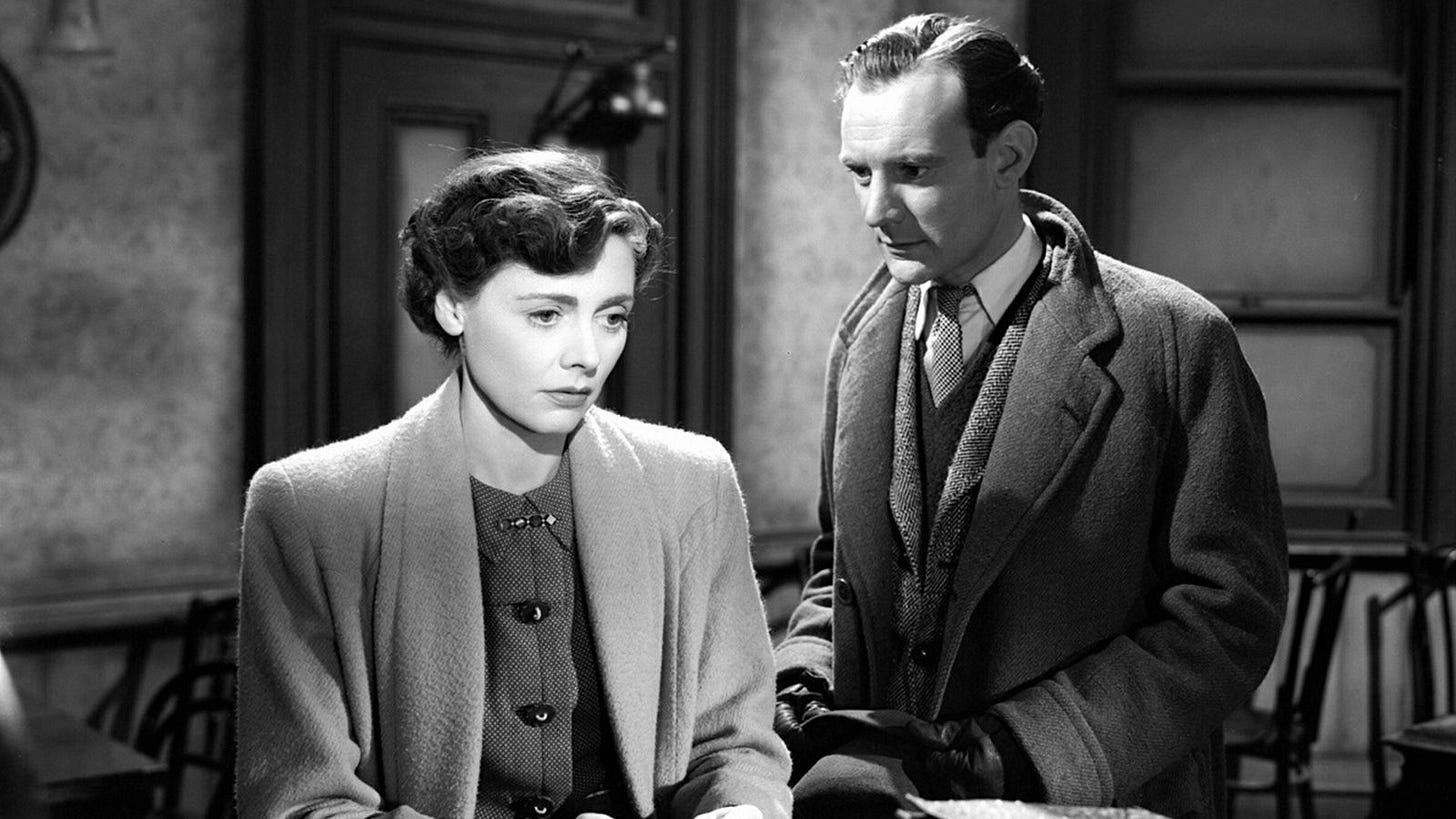
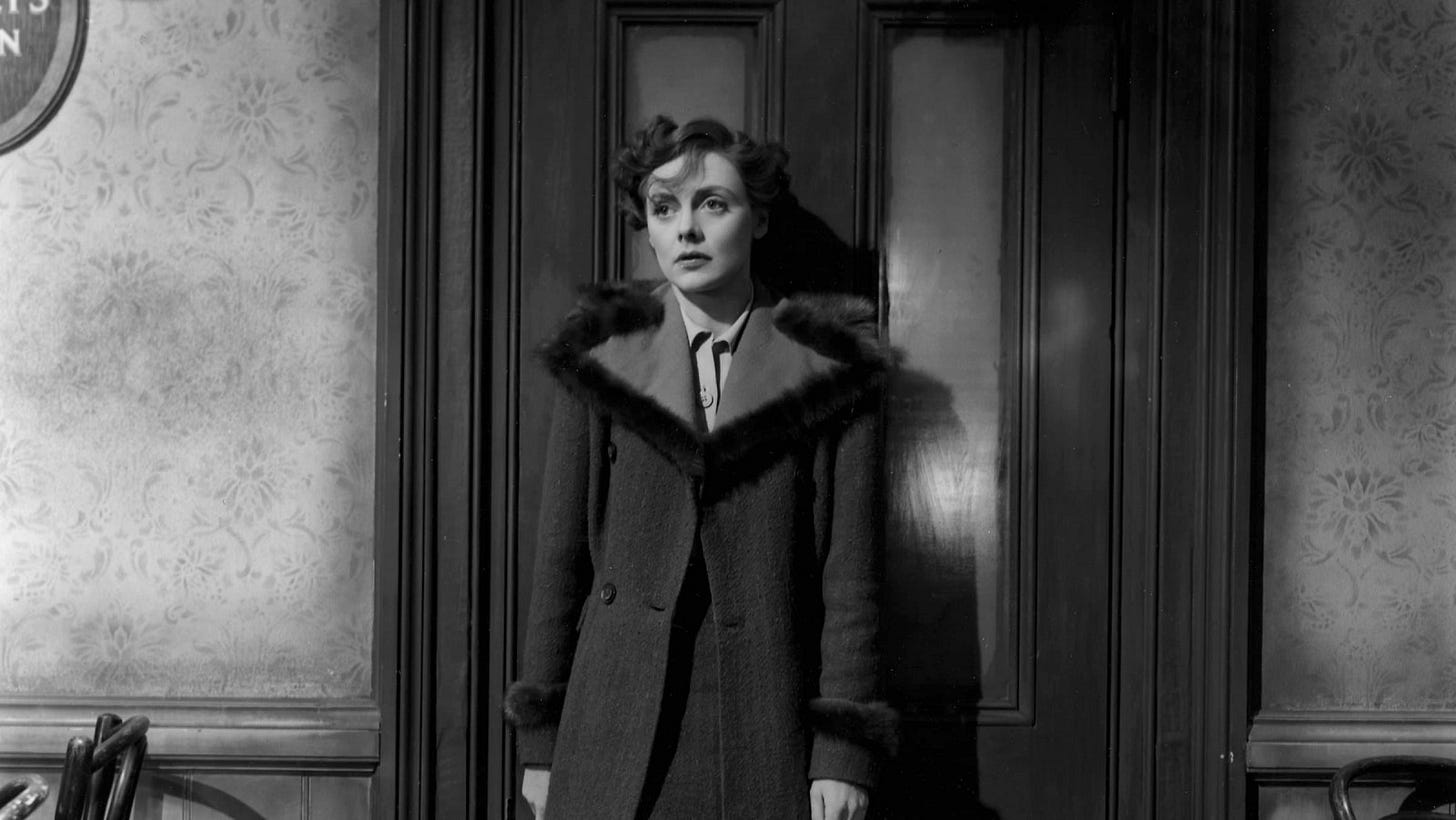
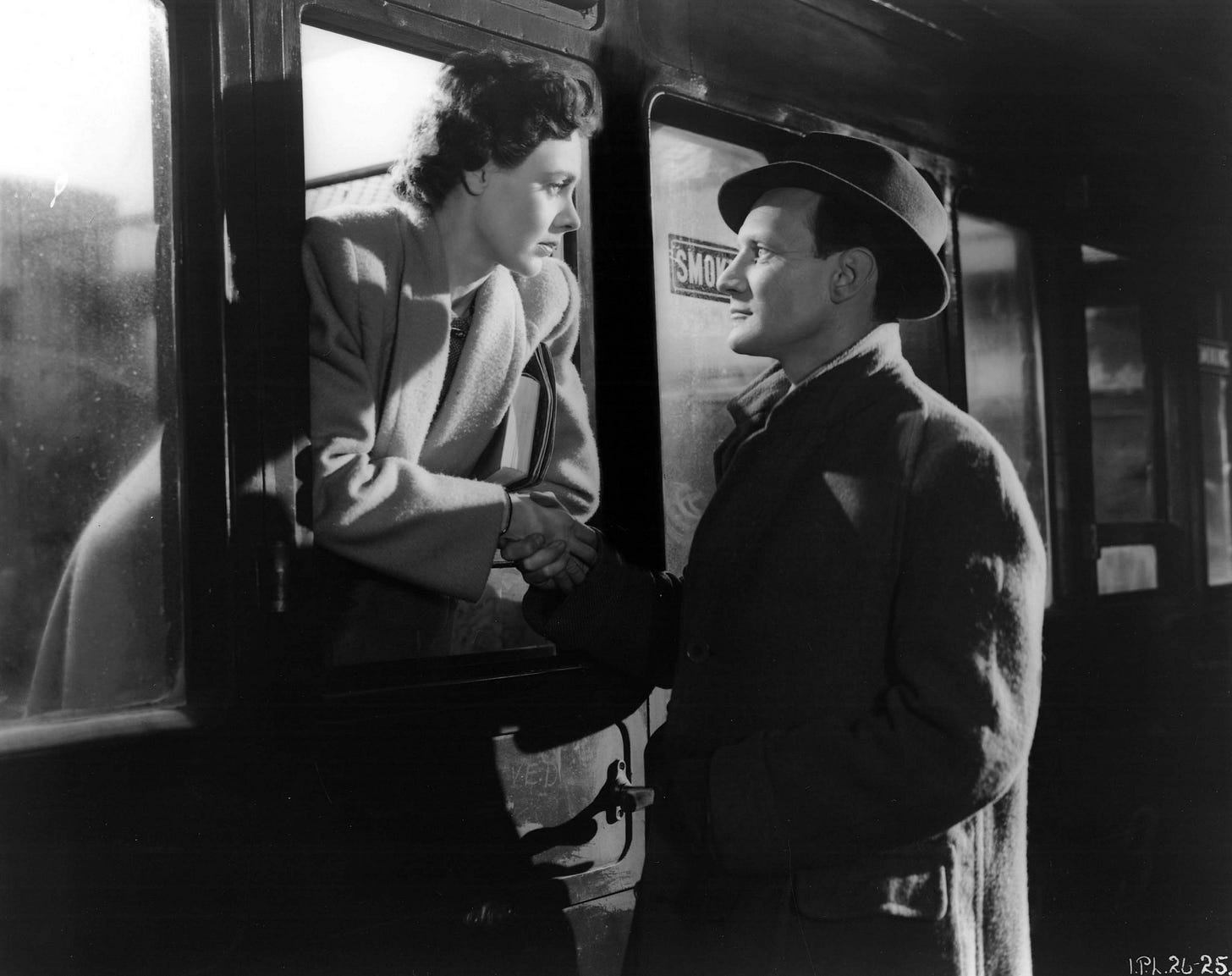
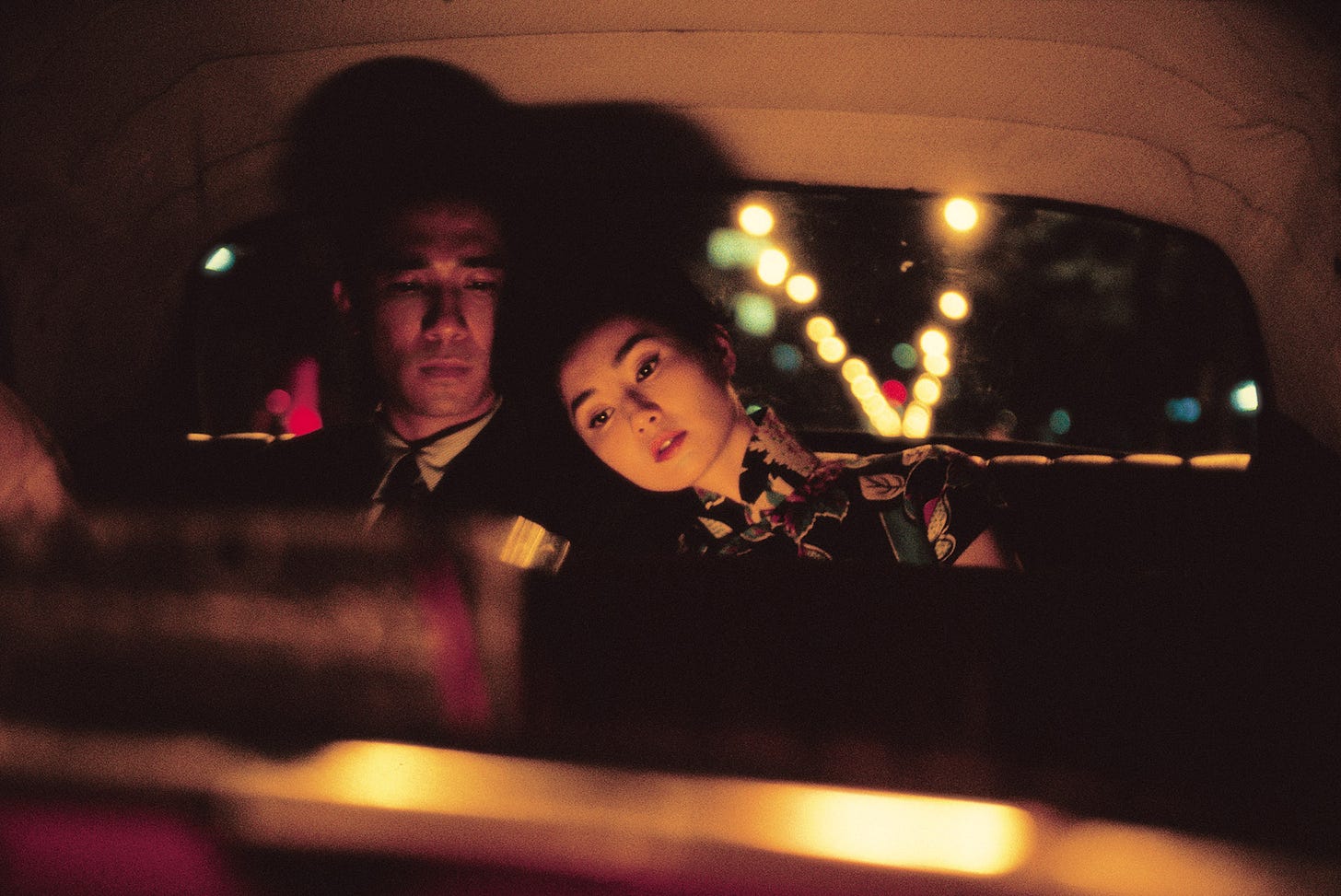
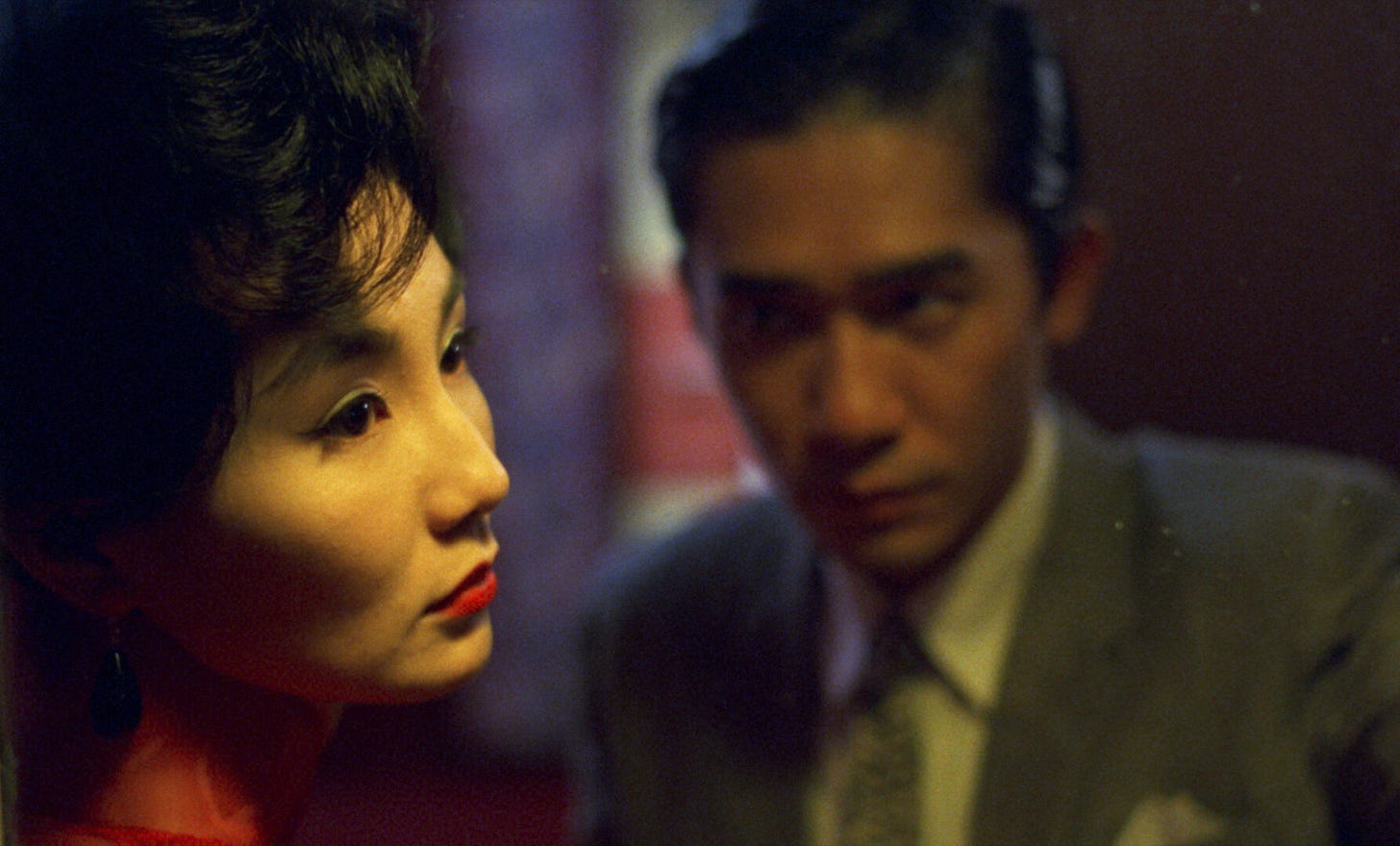
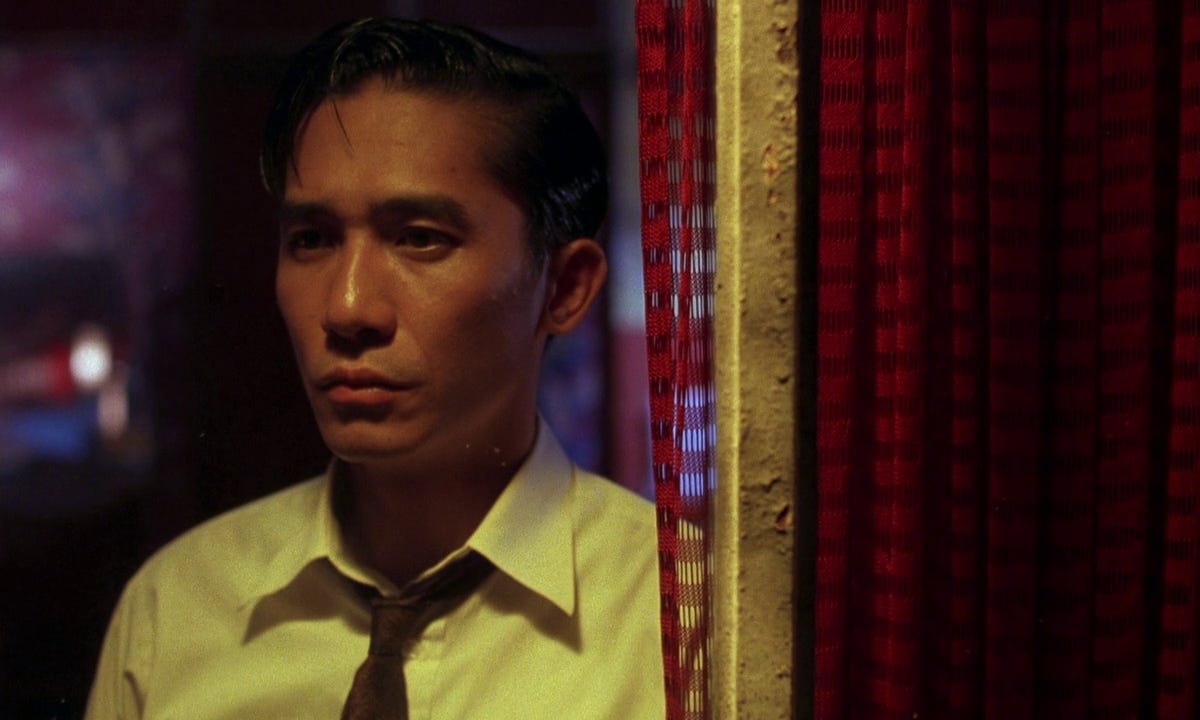
Both great films. Brief Encounter in particular is a major favourite. There's no such thing as a perfect film, but if there were, it would look like Brief Encounter.